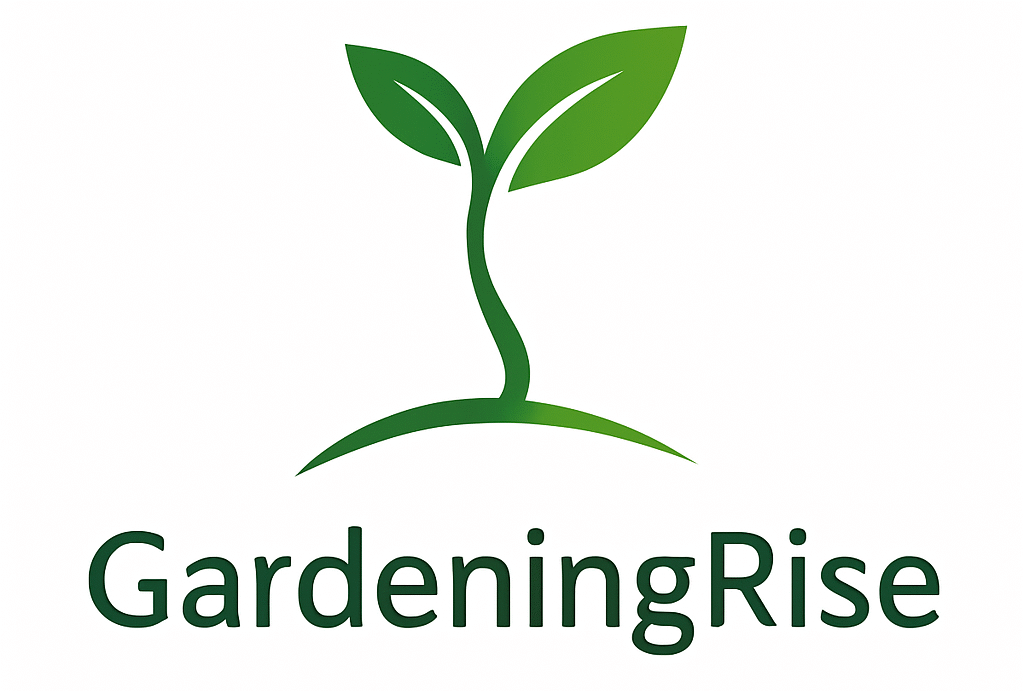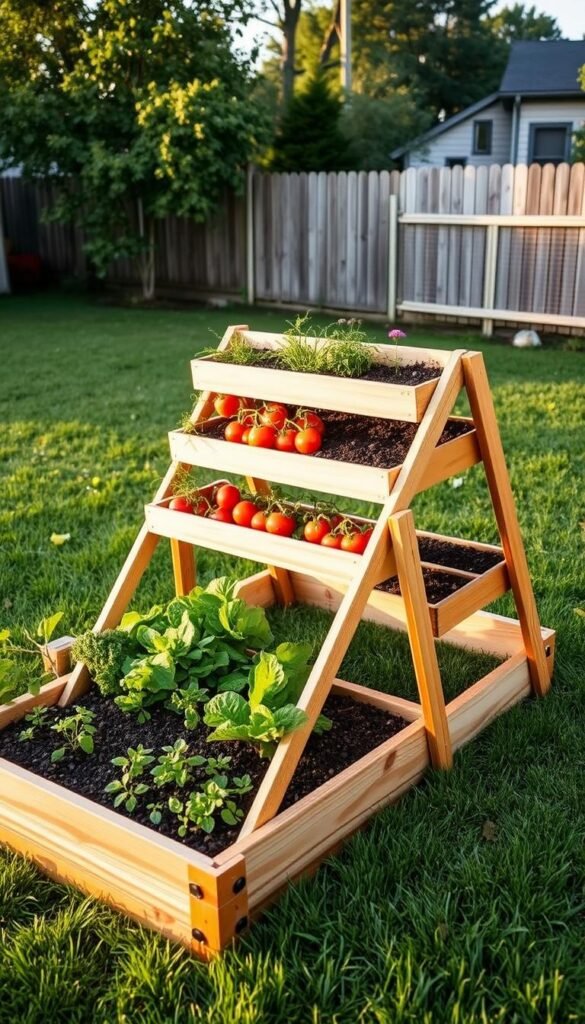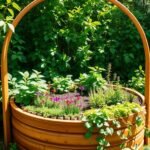Imagine harvesting fresh tomatoes from your balcony or relocating herbs to catch afternoon sunlight without hassle. Modern planting solutions now let you cultivate crops without permanent space commitments, blending flexibility with functionality. These mobile systems adapt to apartments, rental homes, or seasonal moves, ensuring your green thumb stays active no matter where life takes you.
Why are these structures gaining popularity? They eliminate common frustrations like poor soil quality and limited yard space. By elevating plants, you gain better control over drainage and pest management. For those curious about setup, our guide on how to build a raised bed simplifies the process from start to finish.
Mobility isn’t just about convenience—it’s strategic. Rotate planters to maximize sunlight exposure or shield greens from sudden storms. Lightweight materials like cedar or recycled plastics make repositioning effortless while maintaining durability. You’ll also protect your investment during relocations, keeping herbs and vegetables thriving year-round.
This approach differs from traditional methods by prioritizing adaptability. Instead of wrestling with rocky soil or invasive weeds, you create ideal growing conditions in a contained area. Whether you’re a city dweller or frequent mover, these systems offer a practical path to fresh, homegrown produce.
Getting Started with Portable Raised Garden Beds
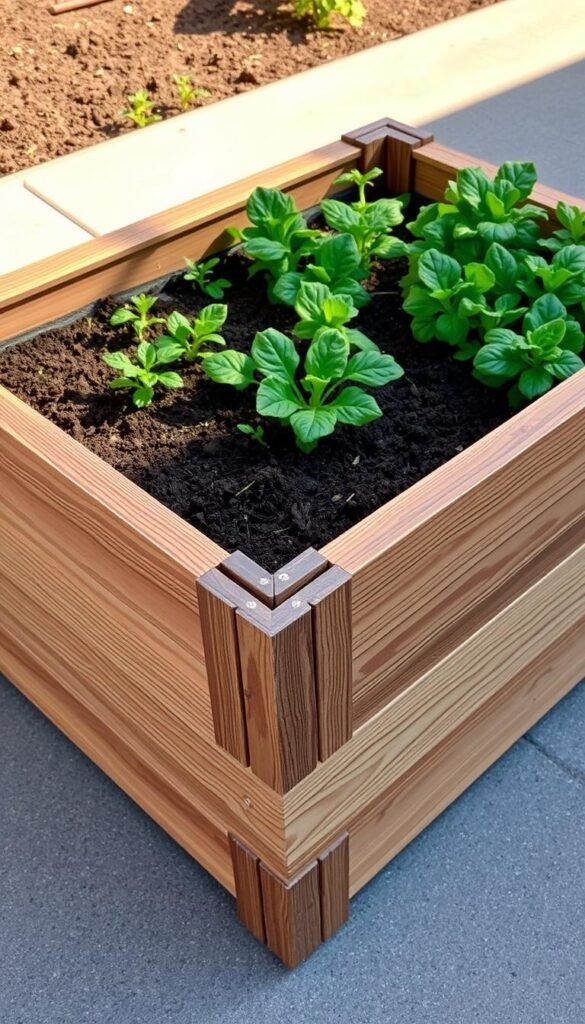
Begin by measuring your available area. Whether it’s a patio corner or a sunny windowsill, space efficiency determines your success. Aim for containers that fit your lifestyle—compact designs work for renters, while larger setups suit backyards. Check sunlight patterns for at least 6 hours of daily exposure.
Start with one or two units to avoid overwhelm. A smaller system lets you test soil mixes and plant choices without heavy investment. Use lightweight materials like fabric pots or modular cedar boxes for easy adjustments. Curious about cost-effective options? Explore our guide on budget-friendly raised beds for clever material hacks.
Gather essentials like potting soil, a trowel, and seedlings before assembling. Create a timeline: allow 1-2 weeks for setup and 3-4 weeks for plants to establish. Track your local frost dates using free apps—this helps avoid weather-related setbacks.
Your first season focuses on learning, not perfection. Experiment with herbs like basil or leafy greens that forgive minor mistakes. Rotate crops every few months to maintain soil health. With patience, you’ll master mobile cultivation’s rhythm.
Benefits of Raised Garden Beds for Mobile Gardening
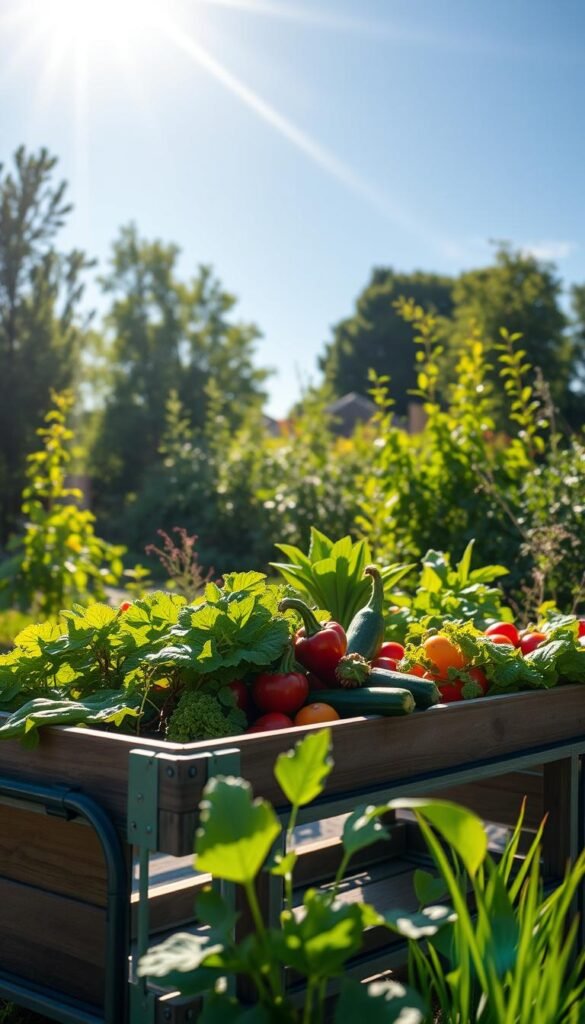
Adaptable growing systems offer more than just convenience. These structures deliver superior drainage, preventing root rot during heavy rains. Unlike ground plots, excess water flows freely through loose soil mixes tailored to your crops.
Working at waist height reduces strain on your back and knees. Planting becomes effortless when you’re not bending over stubborn ground soil. This ergonomic advantage lets you tend herbs and vegetables without discomfort.
Full control over soil composition is another perk. Mix in compost or sand to create ideal conditions for specific plants. Vego Garden’s modular raised gardens simplify this process while lasting through multiple seasons.
Pests struggle to reach elevated crops, giving your greens natural protection. Add row covers or netting for extra security against insects and small animals. You’ll spend less time battling invaders and more time harvesting.
Expand your setup effortlessly as your skills grow. Modular designs let you add new beds or rearrange existing ones for crop rotation. Some systems even support cold frames, stretching your growing season into cooler months.
Maximize yields in tight spaces by planting intensively. Strategic layouts let you grow 2-3 times more food compared to traditional rows. It’s like having a farmers’ market at arm’s reach!
Exploring the Versatility of Garden Beds and Planters
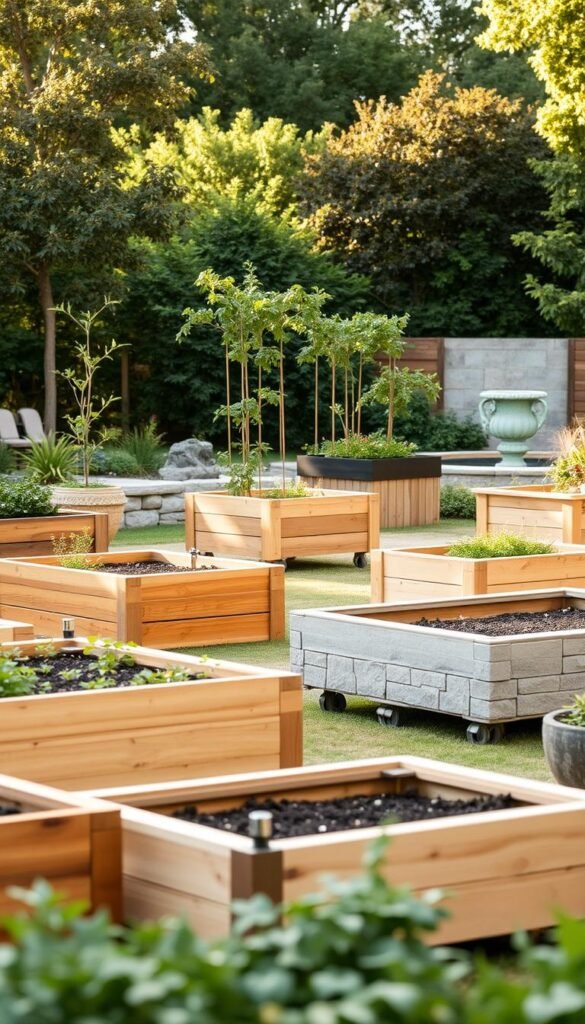
Modern gardening thrives on adaptability, and your choice of containers plays a crucial role. Today’s garden beds come in sizes ranging from 12-inch herb boxes to 8-foot multi-tiered systems. This variety lets you match your setup to available space while maximizing yields.
Different planter styles solve specific growing challenges:
- Deep beds (18″+): Ideal for carrots and potatoes
- Shallow containers (6-8″): Perfect for lettuce and spinach
- Vertical designs: Support climbing beans or flowering vines
Modular systems shine in unconventional spaces. Connect hexagonal beds around patio pillars or arrange rectangular planters along stair railings. One gardener transformed a fire escape into a thriving edible display using interlocking units.
Seasonal flexibility is another advantage. Use smaller beds as protective nurseries for seedlings before moving plants to larger containers. When frost threatens, simply relocate vulnerable greens indoors. For year-round success, pair these strategies with organic gardening basics.
“My modular system grows tomatoes in summer, chrysanthemums in fall, and kale through winter—all without replanting.”
Beyond vegetables, these beds host lavender bushes, marigold borders, or compact compost bins. Experiment with unusual pairings—basil thriving beside strawberries or flowers deterring pests naturally. The only limit? Your imagination.
Choosing the Right Materials and Design for Your Raised Bed

Your garden’s success starts with smart material choices. While cedar and recycled plastic work for temporary setups, galvanized steel dominates in durability. Vego Garden’s steel beds resist rot, pests, and weather extremes—lasting 10+ years without replacement costs.
Compare popular materials:
- Galvanized steel: Handles heavy soil loads, won’t warp
- Cedar wood: Natural look but needs yearly sealing
- Recycled plastic: Lightweight yet prone to UV damage
Design matters as much as materials. Aim for 12-18″ depth for root vegetables and 4’ width for easy access. Longer beds (6-8’) stay stable when moved, while modular sections adapt to tight spaces. Steel’s rigidity prevents bulging sides during transport.
Though pricier upfront, steel saves money over years by eliminating replacements. One gardener shared:
“My Vego bed survived three moves—still looks new after five seasons!”
For creative alternatives, explore stock tank gardening using similar metal principles. Choose powder-coated finishes to match modern patios or rustic decks, blending function with personal style.
A Step-by-Step Guide to Building Your Raised Garden Bed
Transform your gardening experience by adding wheels to your setup. This project turns stationary planters into mobile units, letting you chase sunlight or dodge bad weather effortlessly. Follow these steps to create a stable, movable foundation for your plants.
Marking Your Drill Holes for Casters
Flip your planter upside down on a flat surface. Use a measuring tape to find the container’s center point. From there, mark four spots equidistant from the center—like compass directions. Adjust measurements until all marks form perfect symmetry.
Double-check distances between marks using a ruler. Uneven spacing causes wobbling when moving your raised garden bed. One gardener shared:
“Taking 10 extra minutes to verify measurements saved me hours fixing crooked wheels later.”
Attaching Casters and Ensuring Stability
Position your framing square against the planter’s edge to align casters straight. Drill pilot holes at marked spots using a bit slightly smaller than your bolts. Always wear safety glasses—metal shards fly during drilling!
| Tool | Purpose | Tip |
|---|---|---|
| Measuring Tape | Marking accuracy | Use locking feature |
| Framing Square | Alignment | Check right angles |
| Power Drill | Creating holes | Start slow |
| Bolt Tightener | Secure fastening | 1/4 turn past snug |
Insert bolts through caster holes with washers on the reverse side. Hand-tighten nuts first, then use a wrench for final securing. Test each wheel’s rotation before loading soil—stiff casters strain plants during movement.
This step-by-step project works best with a helper, but solo builders can use clamps to hold components steady. Once complete, you’ll enjoy tending plants at perfect heights and repositioning your garden with ease.
Mobile Planting Solutions for Dynamic Lifestyles
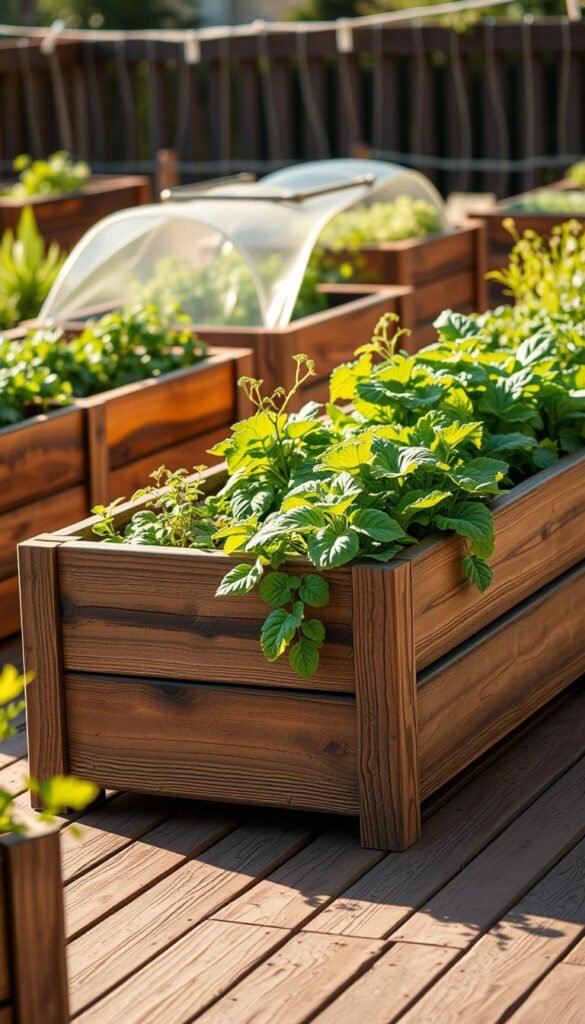
Modern cultivation breaks free from fixed locations through innovative design. These mobile systems empower growers to maintain fresh harvests despite relocations or limited outdoor areas. One military spouse shares:
“We move every two years—our collapsible beds let us take 12 tomato plants cross-country without replanting.”
Sunlight optimization becomes effortless. Roll containers to morning light zones, then shift them to shaded areas during peak afternoon heat. Urban dwellers report 30% higher yields by tracking solar patterns through seasons.
Three key advantages redefine accessibility:
- Ergonomic access: Adjust heights to eliminate kneeling
- Weather defense: Relocate crops before hailstorms
- Space sharing: Rotate beds between community plots
Backyard experiments flourish through microclimate testing. Try peppers in south-facing corners or leafy greens under dappled tree cover. One Arizona gardener grows lettuce year-round by moving planters between garage and patio.
Social opportunities blossom alongside vegetables. Neighborhood “crop swap” events now feature mobile setups demonstrating vertical growing techniques. Schools use wheeled units for student-led herb projects that travel between classrooms.
| Scenario | Solution | Benefit |
|---|---|---|
| Apartment balconies | Stackable planters | Maximize vertical space |
| Frequent relocations | Collapsible frames | Easy transport |
| Physical limitations | Waist-high beds | Comfortable access |
These adaptable systems turn challenges like small yards or unpredictable weather into manageable variables. Whether protecting basil from sudden frost or sharing harvests with neighbors, mobility keeps your greens thriving wherever life unfolds.
Understanding Soil, Drainage, and Nutrient Needs
Healthy plants begin with what’s beneath the surface. Your mobile setup’s success depends on three key factors: balanced soil composition, efficient water movement, and consistent nutrient availability. Let’s dig into creating the perfect underground environment for thriving greens.
Crafting Your Custom Soil Blend
Start with a base of high-quality potting mix—avoid dense garden soil that compacts easily. Mix in 30% compost for organic matter and 20% coarse materials like perlite. This creates air pockets while retaining moisture. One urban farmer shares:
“My tomatoes doubled in size after switching to a 50-30-20 mix of potting soil, worm castings, and coconut coir.”
Different crops need specific depths:
- Leafy greens: 6-8″ of loose soil
- Tomatoes/peppers: 12-14″ for strong roots
- Carrots/parsnips: 18″ depth minimum
Mastering Moisture Control
Proper drainage prevents soggy roots while maintaining hydration. Add a 2″ gravel layer at container bottoms or mix sand into heavy soils. Check drainage holes weekly—clear clogs with a pipe cleaner.
| Material | Drainage Boost | Best For |
|---|---|---|
| Perlite | High aeration | Seed starters |
| Coarse sand | Weight balance | Heavy feeders |
| Lava rock | Long-term use | Perennial herbs |
Test moisture by sticking your finger 2″ deep. If soil clumps together, wait a day before watering. During heat waves, add mulch to reduce evaporation. Remember—consistent moisture beats frequent soaking!
Planning Your Garden Layout for Small Backyards and On-the-Go Setups
Transform cramped corners into thriving edible spaces with smart arrangement strategies. Even small backyard areas can support multiple growing zones when you position garden beds in geometric patterns that balance sunlight access and foot traffic flow.
Arranging Beds in Even, Functional Patterns
Start by sketching your space—note sunlight hours and permanent structures. A 4’x4′ bed layout works wonders in small backyard settings, fitting neatly along fences or patios. Leave 3-foot pathways between units for comfortable weeding and harvesting.
Try these space-maximizing setups:
- Linear rows along property lines catch morning light
- L-shaped clusters turn underused corners into herb hubs
- Modular grids enable crop rotation without replanting
Pair plants strategically using square foot gardening principles to boost yields. Tall crops like tomatoes go northward, while low-growers like lettuce claim southern spots. This method slashes water use while tripling harvests in even small footprints.
Maintain flexibility—wheeled beds let you shift layouts seasonally. One urban grower rotates citrus trees between balcony and living room, proving small backyard limitations can’t stifle creativity!
